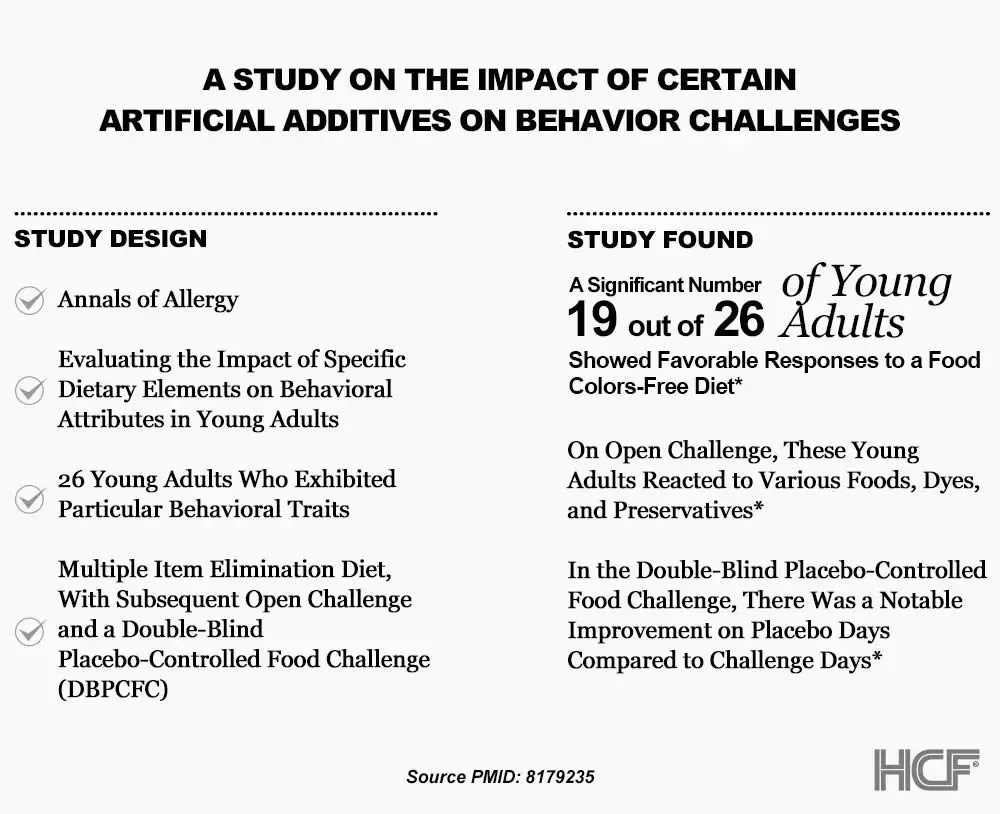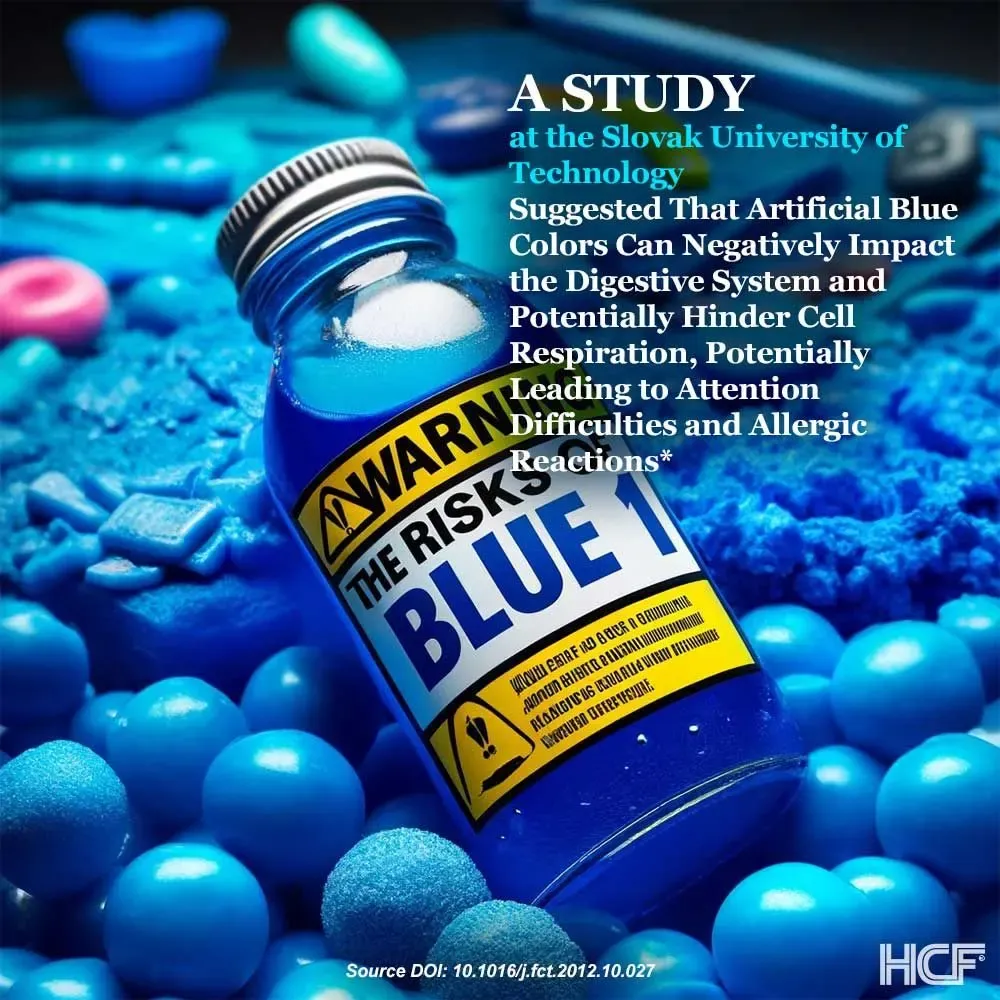
2EXCIPIENTS
Blue Tinted Glasses: Understanding the Health Implications of Blue #1 Coloring (Brilliant Blue FCF)
3 min read

Essentials
- Recent studies have raised potential health concerns associated with Blue #1, particularly its possible link to attention challenges in young adults.
- While the FDA regulates the use of Blue #1 in the US, other countries (like the UK and the EU) have stricter regulations or bans on certain artificial colorants.
Have you ever glanced at a nootropic label and wondered: What’s up with all these fillers, binders, and additives? One in particular, Blue #1 (or Brilliant Blue FCF), might have caught your eye. It's everywhere.
But the real concern? According to science, it's one of those synthetic colors—along with Red #4 (Carmine), Red #40, Yellow #5, Yellow #6, and Annatto—that may be linked to allergic reactions and other health challenges.*
And to be perfectly honest, synthetic colors (like Blue #1) is why we, at HCF®, advocated for years for clean-label nootropics formulated without unnecessary ingredients that have no nutritional value and may actually hinder nutrient absorption potentially reducing a nootropic’s effectiveness. Our commitment to the 7 Advances® principles is why we prefer non-artificial alternatives.*
Some studies may suggest a link between artificial colors and attention challenges.*
It’s no secret that many brands use artificial colors for their stability. Most natural alternatives can fade, change, or degrade over time, especially when exposed to light or varying temperatures.
Artificial colors, on the other hand, maintain their vibrant shade. And the cherry on the top? They can be a VERY cost-effective option.
And yet, we avoid using them in our advanced time-release microbead neuro-nutrients, meticulously crafted to support your entire brain network (head, heart, and gut). Why? Well, as mentioned above, it’s common sense, really.
Artificial colors (including Blue #1) have been scrutinized for their potential effects on the body's three brains.*
There are valid concerns that these additives could impact mental focus and clarity (head), emotional well-being (heart), and digestive health (gut). While not all studies agree, some suggest that artificial colors may disrupt the balance in these areas, leading to potential health implications.*
And there’s more. Ongoing research suggests a potential link between Blue #1 and attention-related challenges. While some may argue that more research is needed, the existing evidence alone might already be enough to give anyone pause.*
Here’s an example: A 1994 study evaluated 26 young adults who met the criteria for an attention challenge.


Researchers found that 73% of the young adults showed decreased effects when artificial colors and preservatives were eliminated from their diet.*1
And another one: A comprehensive 2004 analysis of 15 different studies suggested a similar correlation: artificial colors may decrease focus and attention in already sensitive young adults.*2
And they keep coming: In another 2022 review looking into the effects of artificial blue colors in sensitive young adults with attention challenges, researchers explored the possibility that environmental factors—including diet and specifically artificial colors—could influence challenges severity.*3
The focus of this study? Two FDA-certified blue colors: Blue #1 and Blue #2. And the findings? There may be a potential correlation between artificial colors and trouble with concentration and difficulty staying on task in young adults.*
One last example:


Many countries have already taken a more precautionary approach.
In the United States, the FDA approves the use of food additives based on their review of the scientific evidence. When the FDA approves, let's say, a color additive, they specify where it can be used, the maximum allowed amounts, and how it should be identified on the nootropic label.
However, things may be different in other countries. Since 2010, in the UK, if a food contains artificial colors—like Blue #1—it needs a 'heads-up label.’ A 'proceed with caution' sign if you like.*
The European Union (EU) has upped the game even further. Due to potential health concerns, the EU has banned a number of artificial colors (some still permitted in the US). And for the allowed few, they often require similar warning labels.*
How can I even limit exposure to Blue #1?
That's a great question! :-) One good way to limit your exposure (or of your loved ones) to potentially harmful additives and excipients is to simply avoid nootropics (and other products) that contain them.
But complete avoidance is easier said than done. We would have to turn into some sort of ‘label detectives,’ carefully read extensive ingredient lists, and extensively research unnecessary fillers, binders, and additives. It's not an easy feat.
Or you could consider nootropics from brands with a transparent approach on what they put in their products. So you can make informed decisions.